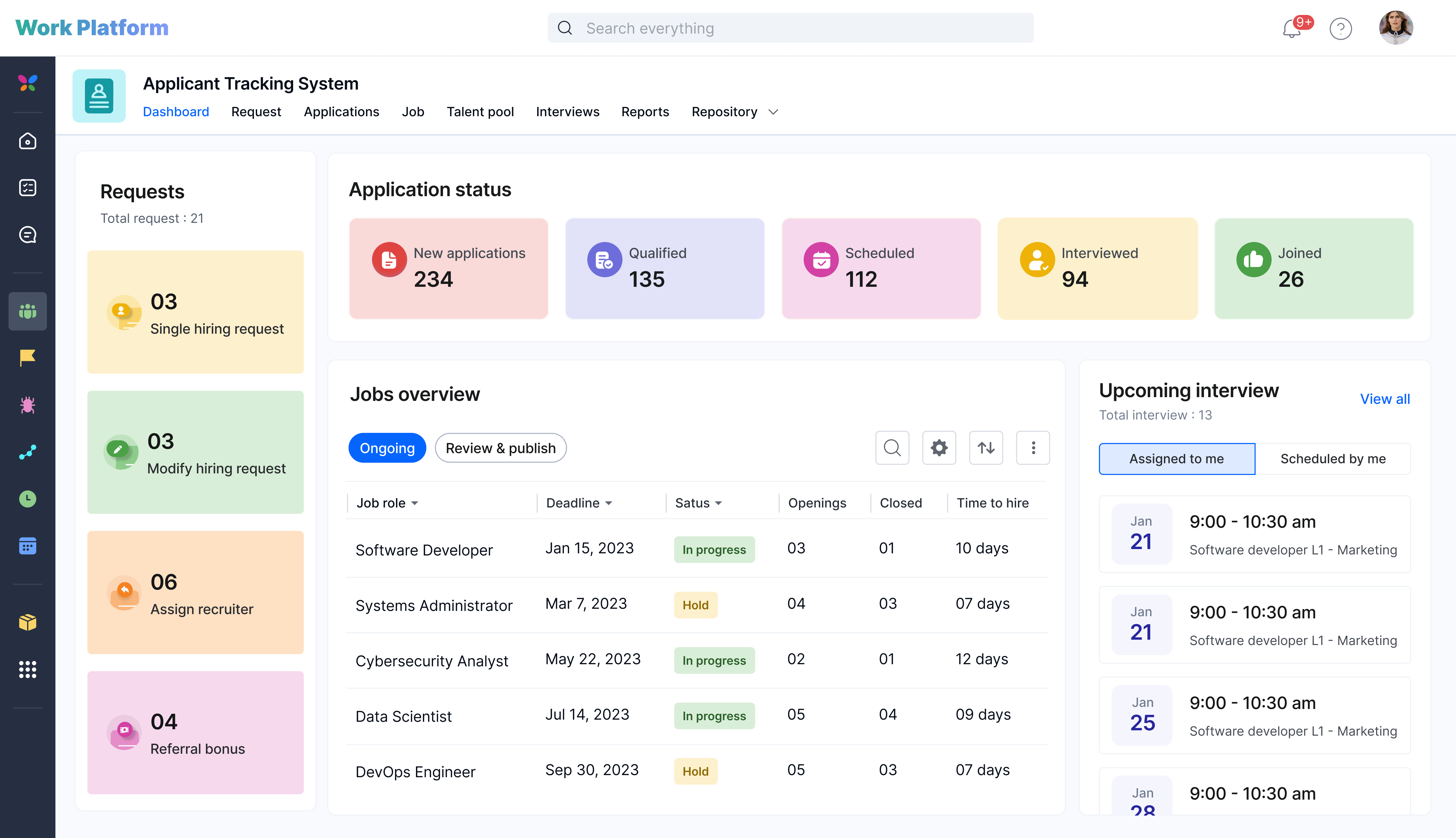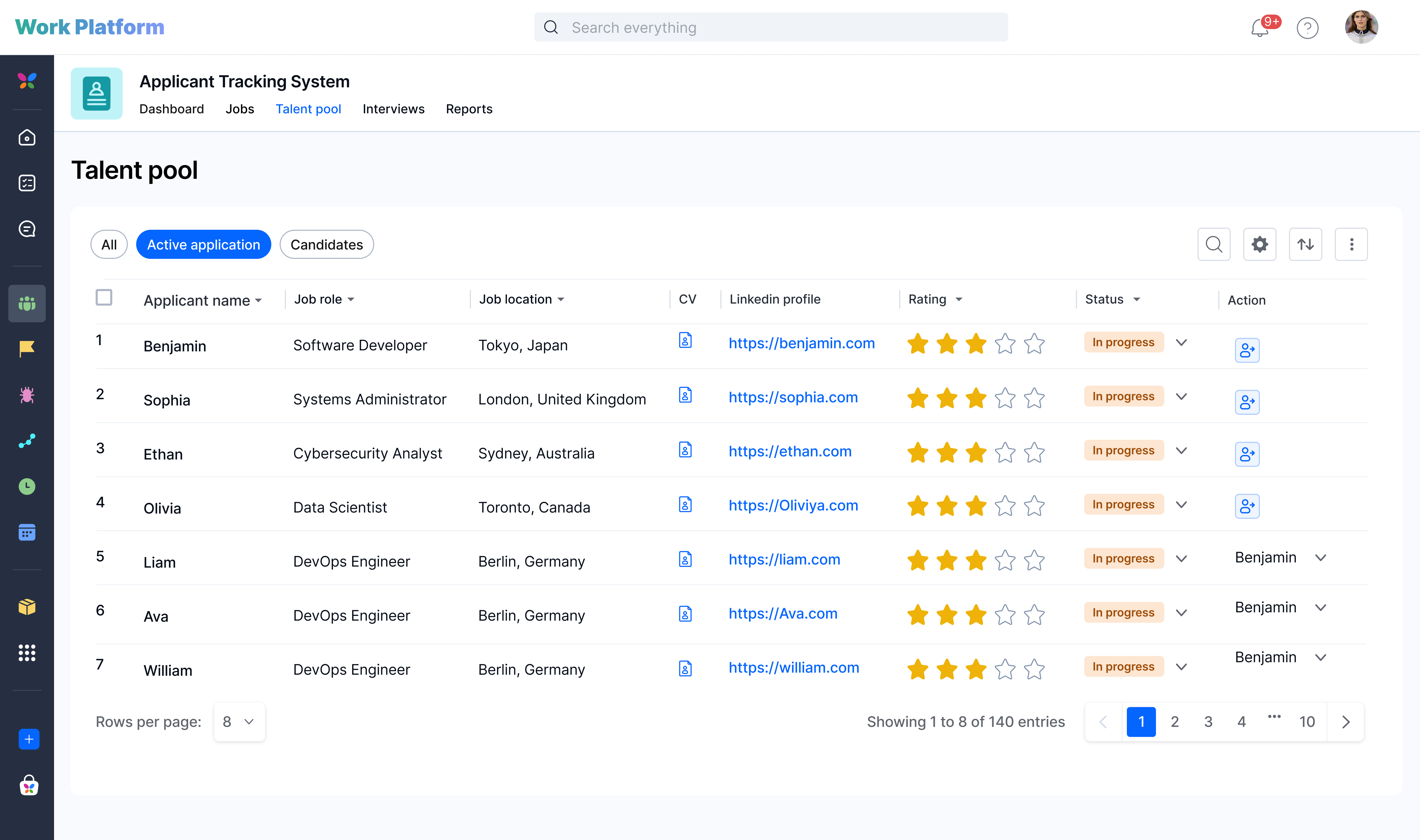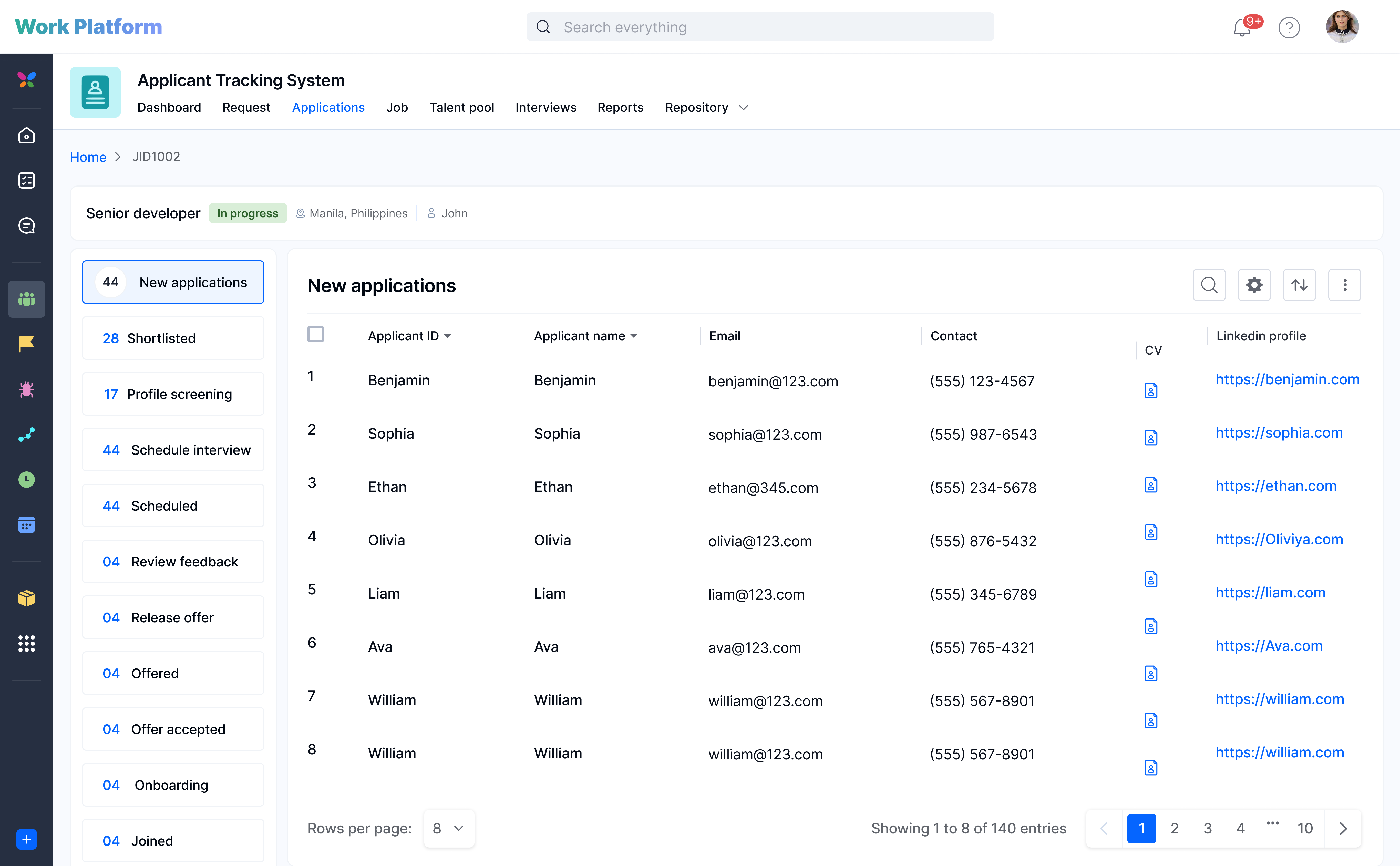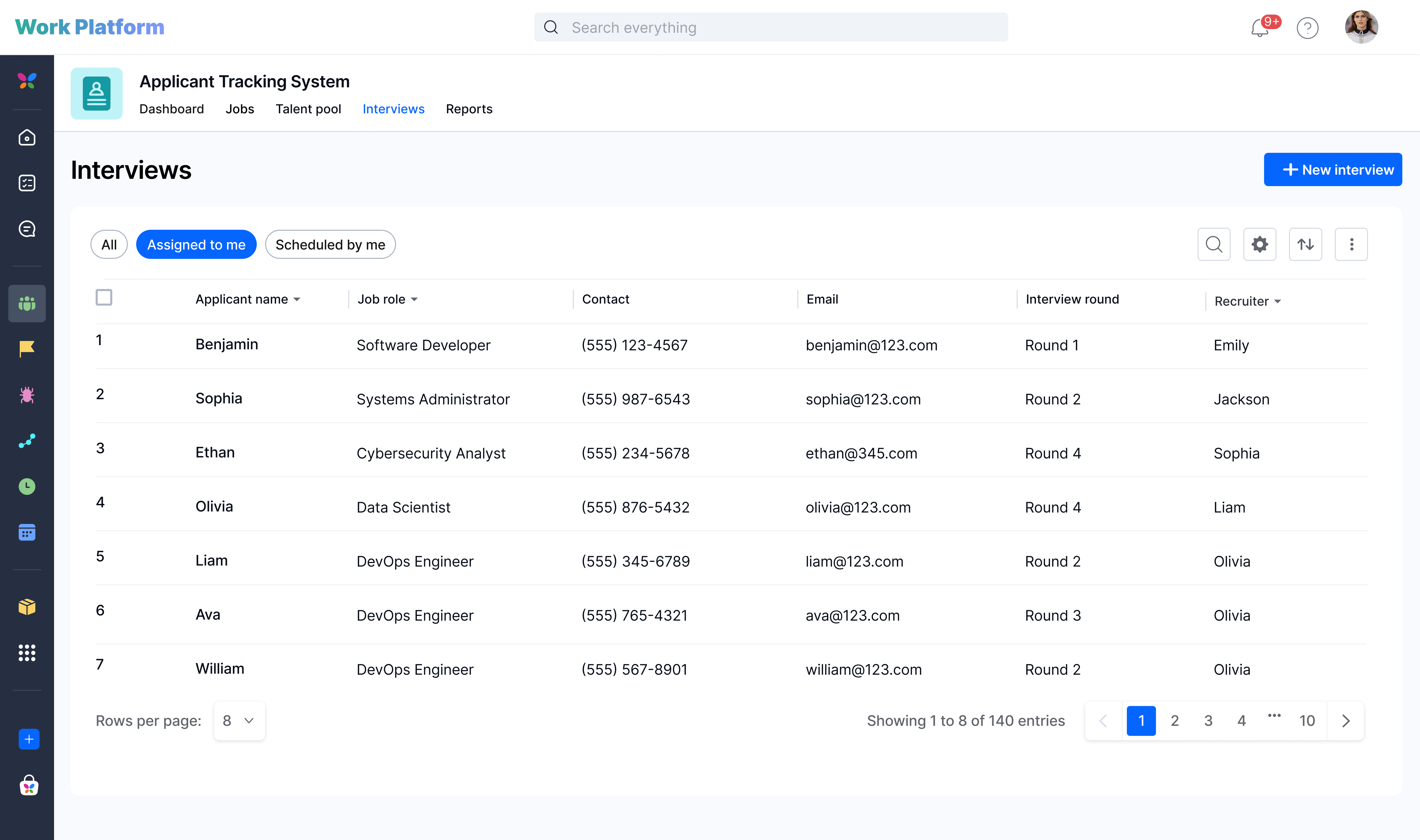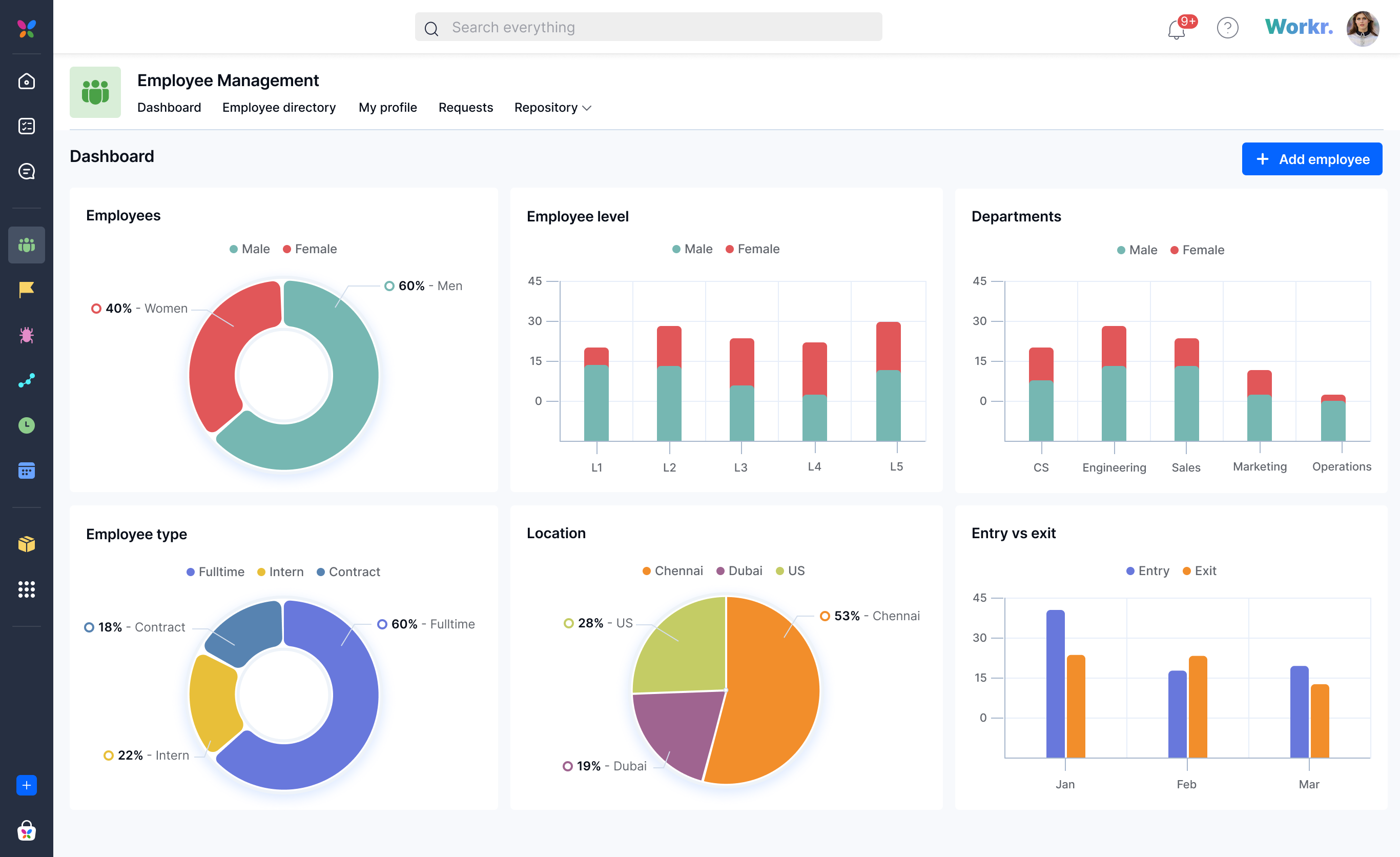Build Faster With
Kissflow's Pre-Built Low-Code Apps
Building low-code apps with Kissflow is easy and requires minimal training. The visual app-building approach empowers anyone to create simple and complex apps without needing developers. Install fully functional pre-built low-code apps to instantly automate and digitize your internal operations, streamlining your work without starting from scratch.

Applicant Tracking System
Streamline your recruitment process with automated workflows, real-time candidate tracking, and easy integrations
Creator
Language
English
Category
HR
Trusted by HR teams for efficient recruitment processes



Employees are an organization's backbone, so finding the right talent is critical. Sourcing potential candidates and onboarding them as employees are important stages of talent acquisition. Tracking and sifting through thousands of applications for a single job can be daunting for talent managers. The Applicant Tracking System (ATS) app assists recruiters in identifying qualified candidates and onboarding them as employees. Talent managers can use the ATS app to commence hiring through the careers site, by directly adding resumes to the applicant talent pool, and through employee referrals. The app includes a dashboard layout that displays data at your fingertips. Recruiters and candidates can benefit from an improved and faster recruitment process with the ATS app, which automates candidate sourcing.
- Hiring request
- Talent Pool
- Interview scheduling and Automated emails
- End to tracking of Applications
- Role based Dashboards
1. Click the Enquire button found on the app tile or the app landing page.
2. An enquiry form appears. Next, fill in the details of the features you want and your team’s size in the enquiry form.
3. Click Submit.
Kissflow’s support team will contact you to know more about your requirements.
Optimizing retail operations: Real-world success
Hear from retailers who improved efficiency using Kissflow

This is so easy, even my mom could do this. It was extremely intuitive and straightforward. The watermark was, 'I don't need to call IT to do this. I can do it myself.
Renee Villarreal
Senior IT Manager
Industry
Energy
HeadQuaters
USA
Key Highlights
450+
Process
10x
ROI
10,000+
Users


The beauty of Kissflow is how quick and easy it is to create the apps I need. It's so user-friendly that I made exactly what I needed in 30 minutes.
Oliver Umehara
IT Manager
Industry
Telecom & Media
HeadQuaters
Japan
Key Highlights
28+
Processes
42
Group Companies
70+
Users


We seek to go beyond incremental efforts not only in sustainability but also in everything we do. With Kissflow, FPH and its subsidiaries were able to digitize dramatically major operations, especially in their finance and accounts operations.
Joseph Arnel Chavez
Assistant Manager
Industry
Energy & Utilities
HeadQuaters
Philippines
Key Highlights
100+
Office Processes Automated
1,000+
Monthly Paperless Processes
10,000+
Employees
Frequently Asked Questions
Accelerate and scale app development with Kissflow
Customize with pre-built templates
Build custom low-code apps quickly with pre-built templates.
Tackle internal app backlogs
Implement strategies to clear your internal application backlog quickly.
Join enterprises that trust Kissflow
Enterprises use our low-code platform to streamline app development.
Didn’t find what you're looking for?
Let us know what we can build for you
